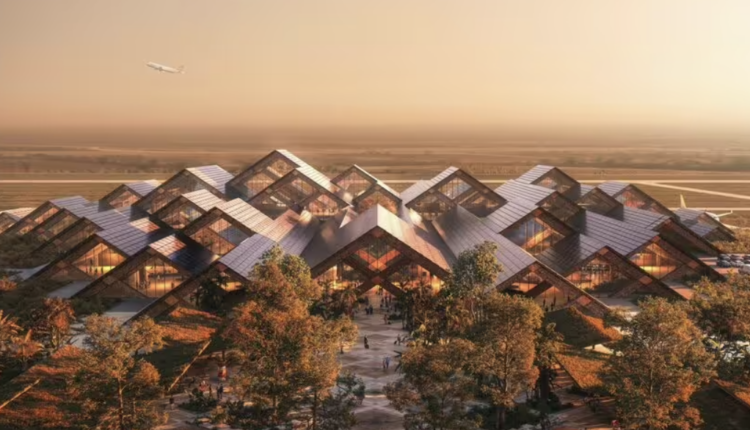
Bhutan Showcases Gelephu Airport Design at Venice Architecture Biennale
Bhutan presents its innovative Gelephu Airport design that merges traditional craftsmanship with modern architecture at the Venice Architecture Biennale.
Bhutan Showcases Gelephu Airport Design at Venice Architecture Biennale
Bhutan is showcasing the working design model for the new Gelephu Airport at the 2025 Venice Architecture Biennale this May.
Running until September of this year, the theme for the 2025 Architecture Biennale revolves around the concept of Ancient Future.
Blending Bhutan’s craft tradition with modern innovation, the new Gelephu International Airport was designed by the Bjarke Ingels Group (BIG) in collaboration with NACO.
The soon-to-be-built facility was designed for mindful travel and future expansion, set against a backdrop of Bhutan’s lush, subtropical forests, mountains, and rivers.
According to Bjarke Ingels, “An airport is the first and last impression of a place you visit. For the Gelephu International Airport, we have tried to embody the nature and culture of the country and the Mindfulness City. The forests that cover the highlands are allowed to flow from the arrival plaza through the airport to the tarmac.”
This architectural masterpiece is set to enhance tourism in the South Asian nation and is expected to open in 2029.
A Unique Synthesis of Nature and Technology
The airport’s diagrid structure is crafted from sustainably sourced timber and adorned with painted wood carvings by local artists inspired by the kachen, a wooden pillar found in Bhutanese architecture revered for its structural significance and intricate design.
Tropical trees provide shade for travelers, and the forest courtyard lines the main functions of immigration, security, and luggage collection.
The airport architecture comprises modular mass timber frames providing flexibility and expansibility, resembling a stylized mountain range when viewed from a distance.
The arrival plaza is divided into four zones, each filled with native plants surrounding the seated areas. Everything is intricately carved and colored according to traditional craftsmanship, featuring three types of dragons representing the past, present, and future of Bhutan—inscribing spiritual significance into the design.
This traditional yet avant-garde feature showcases Bhutan as a forward-thinking nation. As Ingels observes, “For me, this unusual embrace of traditional craft and color is a true testament to how affected I have been by my encounter with Bhutan: the country, its culture, and its people.”
